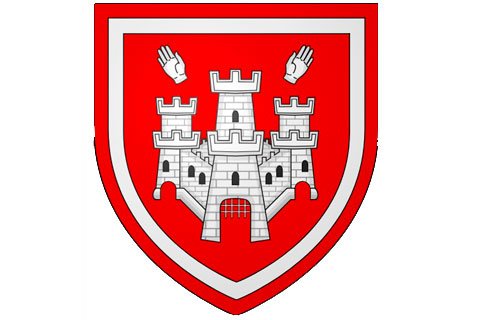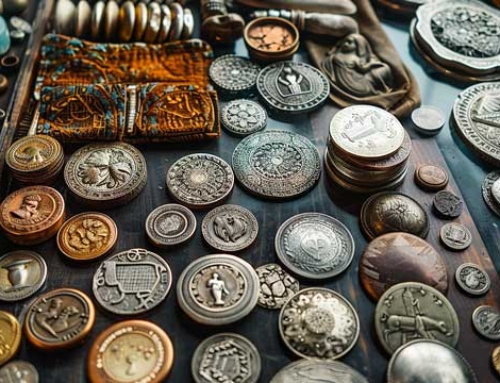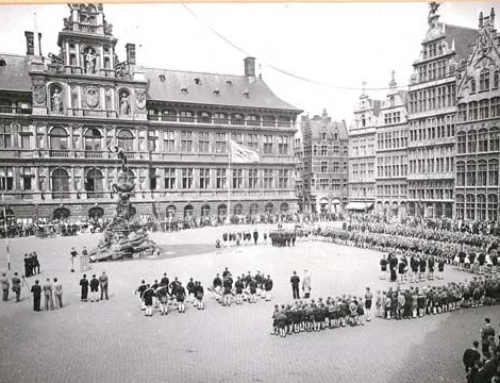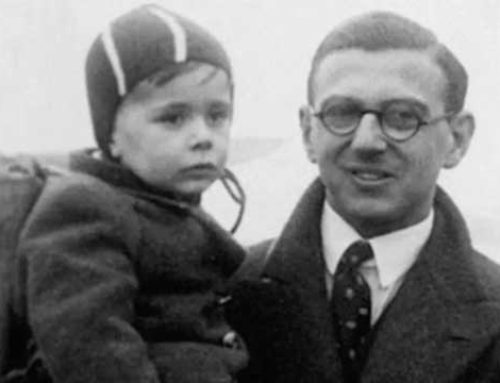A magnificent residential and commercial building on the corner of Leysstraat and Jezusstraat in Antwerp, a tomb with two life-size bronze guards in the cemetery of Berchem and Paul Tolkowsky’s Rodenburg castle in Hove bring us to a forgotten memory spot in Mortsel. A Flemish Rothschild once had a place in our town.
The sun makes the pompous beaux-arts style building in the heart of Antwerp shine. The second floor is prominent. The facades are finished with rusticated stucco. Columns, cornices, pediments, architectural decorations, pilasters, balustrades, garlands, balconies and a monumental classical sculpture make this building an example of the “sugar pie style” of the late 19th century. This is where the greats of the world lived. The patrons of this monumental “maison de rapport” were the diamond merchant Louis Coetermans and his brother-in-law and right-hand man Edmond Michaux. The facade bears the monument of Lodewyk van Bercken who in 1456 discovered a method for cutting diamonds. The building housed a club where diamond merchants could conduct undisturbed business with foreign clients. Some rooms were specially designed for this purpose. For example, there was a newspaper reading room, a party room, a meeting room and a billiard room. An interesting building with a fascinating building history!
Lodewyk van Bercken
In the district of Gitschotel (Borgerhout-Berchem), an avenue is named after Lodewyk van Bercken. Van Bercken came from a family in Bruges and worked in Antwerp. In the mid-15th century he discovered a way to cut diamonds using a disc, olive oil and diamond powder. A citizen of Bruges was thus involved in the foundation of the Antwerp diamond empire.
The house ‘Lodewyk van Bercken’ brings us to Louis Coetermans (1855-1925), diamond tycoon, consul general of Persia and son of wine-buyer-goldsmith Petrus Johannes Emilius Coetermans. In 1869 the family moved from Bergen-op-Zoom to Antwerp. Petrus started a diamond-cutting factory. After the death of his father in 1884 Louis continued the business. Louis Coetermans became one of the largest diamond dealers of his time. He used his influence and fortune to build up the Antwerp diamond world. As a “Prince Diamond“, Coetermans plays an important role in Belgian-Flemish economic history, but in 1925, upon his death, he is consigned to oblivion.
Coetermans was a great collector of Rubens’s. He laid the foundation of the Rubens House. The silver collection of the Sterckshof was his donation. The progressive garden suburb Unitas in Deurne-Zuid emerged from a cooperative, democratic building society that he helped to baptize. Louis Coetermans employed three thousand diamond workers in his own factories in Antwerp-Centre, Borgerhout and the suburban industry in the Kempen and East and West Flanders.
Construction of Africa and the colony of Congo
Around 1900, Louis Coetermans was a key figure in the financial construction of Africa and the colony of Congo, in the conquest of the Brazilian, Argentine, Egyptian and Chinese markets and in the diamond industry in German South-West Africa. From 1884 to 1915, “Deutsch-Südwestafrika” was a colony of the German Empire with a total area one and a half times the size of the German mainland. The colony had a population of about 2600 Germans.
Louis Coetermans’ only rival was Rothschild. With a forceful hand, Coetermans led a huge empire. He supported Flemish initiatives such as the Algemeen-Nederlands Verbond (ANV), the Conscience procession of 1913 in Antwerp, and the pioneers of the Flemish Economic Alliance. After his death he completely disappears from the scene. In Mortsel you had the castle Coetermans. On that estate, a street was opened in 1911 with the name Coetermanslei, but on December 30, 1925, the street was renamed the Armand Segerslei.
Diamond tycoon Coetermans was a social entrepreneur. He campaigned for the abolition of child labor in diamond workshops and was at the forefront of decent public housing in Greater Antwerp. At its peak, Prince Diamond employed 3,000 cleavers and polishers in his hometown and in the outer industries of the Kempen and Flanders.
Chocolate
In honor of thousands of diamond industry cleavers and polishers, ‘The Chocolate Wizard’ developed a trio of chocolate diamonds. Erik D’haene, the ‘Neuhaus’ of Mortsel, came up with an original, filled chocolate bonbon in the shape of a diamond. The luxury praline is handmade and has a filling of raspberry and saffron, hazelnut cream, pineapple flavoured with aniseed, bergamot, honey and lavender, passion fruit and tarragon, salted caramel and many other flavours. The cook of César de Choiseul (Comte du Plessis-Praslin 1598-1675, marshal, minister and diplomat under King Louis XIV) devised a chocolate bonbon with almonds and sugar. He could only envy our chocolate diamonds.







